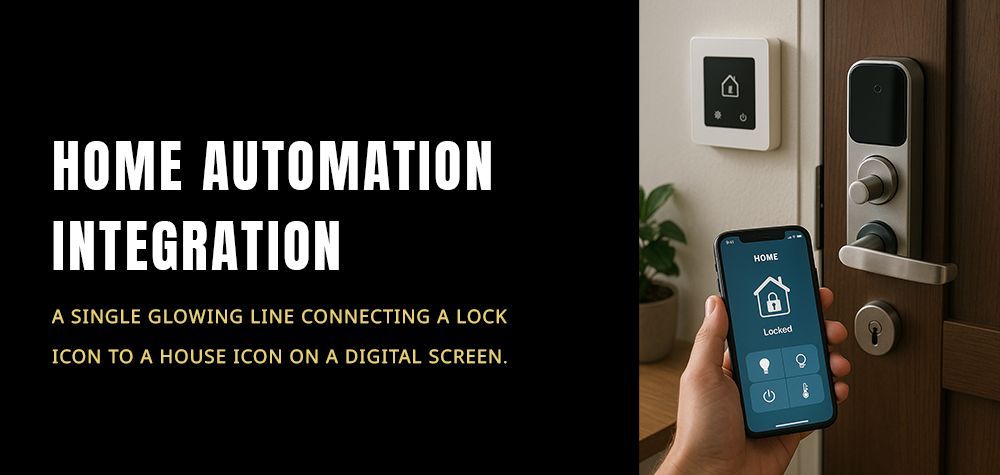Can Locksmiths Help with Safe-Cracking and Combination Locks?
When a safe will not open, whether because a combination is forgotten, the lock has seized, the electronics failed, or the owner misplaced the key, panic and frustration often follow. Fortunately, licensed and experienced locksmiths are the professionals people call in these situations. But “safe-cracking” carries a lot of baggage in popular culture, and it is important to separate legitimate, lawful recovery work from illegal entry. This article explains what locksmiths can and cannot do, the typical approaches they use, legal and safety considerations, costs and timelines you can expect, and how to choose the right professional for the job.
How to safely dispose of old or compromised keys?
What people mean by “safe-cracking” — lawful recovery versus illegal entry
In everyday language, safe-cracking can mean anything from legitimately opening your own safe when you are locked out to a criminal forcing a safe to steal its contents. Professional locksmiths provide lawful safe opening and repair services on behalf of the owner or an authorised agent. They will never assist with gaining unauthorised access. Before any work begins, a reputable locksmith will verify ownership or authority to access the safe. If you cannot prove ownership, the locksmith will decline or ask you to involve law enforcement.
Types of safes and why approach matters
Safes vary widely in construction, locking mechanism, and purpose. Household fire safes and small deposit boxes tend to have simpler combination dials or key locks. Office safes and gun safes use heavier mechanical or electronic locks. High security safes, bank vaults, and commercial strongrooms use complex multi-point bolts, time locks, relocking devices, and hardened steel plates. Because of this variety, the method a locksmith uses depends on the safe type, its locking system, whether it is bolted to the floor or wall, and whether there are anti-tamper or anti-drill protections in place. One size does not fit all.
What a professional locksmith will do — assessment first, then options
A competent locksmith begins with a careful assessment. They will examine the safe’s exterior, the lock type, any visible damage, and ask about the circumstances: when it last opened, whether it was moved recently, and whether anyone else had access. From there they will explain realistic options. These typically include non-destructive techniques when possible, minimally invasive methods if required, and full replacement as a last resort. The locksmith will also explain potential risks to the safe and its contents and obtain written consent before proceeding.
Non-destructive methods: preferred when feasible
When the goal is to preserve both the safe and its contents, locksmiths first try non-destructive approaches. For mechanical combination locks this can include manipulation and decoding techniques that rely on the lock’s feedback to determine the combination. For electronic locks the locksmith may attempt power cycling, battery replacement, or authorised reprogramming through manufacturer procedures. If an authorised backup key or override exists, that may be used. The advantage of non-destructive methods is that the safe remains intact and retains its security rating.
It is important to stress that these are specialist skills requiring training and experience. They are not “recipes” for wrongdoing, and reputable locksmiths will not share detailed manipulation techniques publicly. If a locksmith offers a non-destructive opening, they will also discuss whether the safe’s warranty or fire rating may be affected and whether manufacturer involvement is advisable.
Minimally invasive and destructive options: when they become necessary
If non-destructive methods fail or the safe is damaged, locksmiths may recommend minimally invasive procedures such as targeted access to the lock assembly or cutting a small access port. For heavily reinforced safes with anti-tamper features, more invasive measures — including drilling at specific, controlled points — may be the only practical choice to gain entry. Experienced technicians know how to drill and cut to minimise collateral damage and to preserve the bulk of the safe so it can be repaired or re-certified after opening. Because these tasks permanently alter the safe, locksmiths typically document the procedure and discuss repair or replacement options with you.
Again, locksmiths do not provide the specific step-by-step working details of drilling patterns or manipulation methods to the public. That information is technical and sensitive; it is used responsibly by trained professionals to reopen safes for legitimate owners.
Can wireless doorbells and smart locks interfere?
Electronic locks, keypad failures and battery issues
Many modern safes use electronic keypads. Battery failure, corrupted firmware, or keypad faults are common reasons a safe will not respond. Often these issues are fixable without damaging the safe: swapping batteries, performing an authorised soft reset, or replacing the keypad module may restore access. If the lock is tied to a manufacturer cloud or recovery process, the locksmith will walk you through vendor procedures, or they may liaise with the manufacturer on your behalf if you can prove ownership.
Proof of ownership, documentation and legal safeguards
Before any opening attempt, a professional locksmith will confirm that you are the owner or an authorised representative. This can include photo ID, proof of purchase, serial numbers, or written authorization from the owner. If law enforcement is involved, locksmiths will typically cooperate with officers and may decline service without police presence. This is both a legal protection for the locksmith and a safeguard against facilitating theft.
What safe opening usually costs and how long it takes
Costs vary greatly according to the safe’s size, complexity, location, and the method required to open it. A simple battery replace or keypad reset may be a modest service fee. Mechanical combination manipulation or non-destructive opening is more time-consuming and commands higher labour rates due to specialist skill. Minimally invasive drilling and repair is pricier still, and removing and replacing a heavy safe or reinstalling a repaired unit adds materials and labour. Expect locksmiths to provide a written estimate after inspection and to explain variables that could change the price. Timeframes range from an hour for simple jobs to several hours or more for complex, reinforced safes.
Risks to contents and how locksmiths mitigate them
Safes often contain paper records, electronics, media, or valuables that can be damaged by heat, dust, or shavings when invasive work is performed. Professional locksmiths take precautions to protect contents: they may use shielding, cover seals, or employ techniques that minimise heat and debris. If sensitive media is involved, discuss this with the locksmith up front so they can adapt their approach. In some cases clients choose to remove contents through a small port before full opening, but that depends on the safe and the situation.
When the manufacturer should be involved
For high security or under-warranty safes, involving the manufacturer is sometimes the best route. Manufacturers can supply authorised code resets, replacement electronics, or guidance to ensure the safe retains its certification after service. A locksmith will advise whether the manufacturer’s technical support is needed and can coordinate communication and service work.
Choosing the right locksmith: qualifications and red flags
Select a locksmith with demonstrable experience in safes and certified training. Look for membership in recognised industry associations, manufacturer certifications, and positive local reviews. Ask about insurance and bonding, a clear written estimate policy, and whether they provide documentation of ownership checks. Red flags include technicians who refuse to verify ownership, give unrealistic timeframes, or offer to bypass locks without paperwork. Trustworthy professionals operate transparently and prioritize legal compliance.
Preventing future lockouts and maintaining your safe
After regaining access, take steps to avoid repeat lockouts. Keep combination records in a secure, separate location, register electronic safe serials with the manufacturer, and maintain batteries and electronics on schedule. Consider setting up a secondary authorised user list or emergency access procedure with a trusted professional. For members of households or businesses, document who may legitimately access the safe and rotate any shared codes when personnel change.
Emergency situations and immediate steps to take
If you find yourself locked out and concerned about immediate risk — for example if medications, passports, or critical documents are inaccessible — contact a qualified locksmith immediately and explain the urgency. If a crime is suspected (someone else has breached the safe), contact law enforcement before hiring a locksmith; do not attempt to hide evidence. In non-emergency cases, gather your ownership documents and take photos of the safe and its surroundings to speed the locksmith’s assessment.
Final thoughts: locksmiths can help, but responsibly and professionally
Yes, locksmiths can and do help with opening safes and resolving issues with combination locks. Their work ranges from harmless administrative resets and non-destructive manipulation to carefully targeted drilling and safe repair. The key boundaries are legality, proof of ownership, safety of the safe contents, and respect for the equipment’s certification. If you need professional assistance, choose a licensed locksmith experienced with safes, be ready to prove you have the right to access the unit, and expect the technician to explain the options, risks, and costs before any work begins.
If you are in the Houston or Alabama area and need safe opening or combination lock services, Brothers Locksmith provides emergency and scheduled assistance for residential and commercial clients. Our certified technicians follow strict verification procedures, prioritise non-destructive methods where possible, and will advise you on repair or replacement if necessary. Contact us for an assessment and a secure, lawful solution to regain access.
Call Us Any Time!






